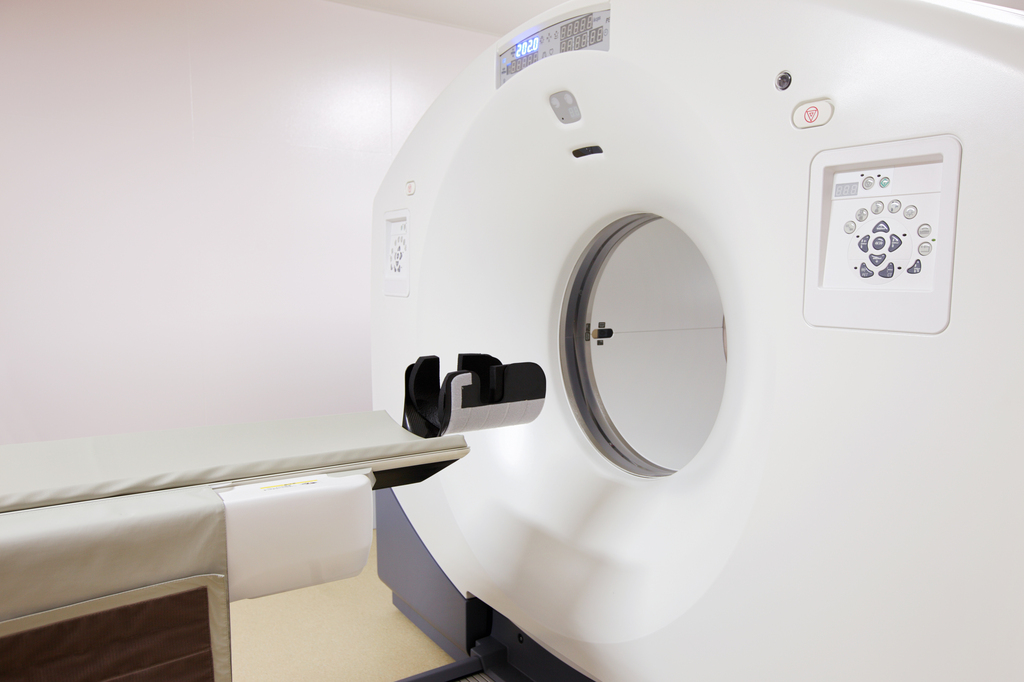Quantitative MRI Is Sensitive Measure of Muscle Decline

Young adults with spinal muscular atrophy (SMA) exhibited thigh muscle decline despite stable strength and motor function over one year, a pilot study using quantitative MRI imaging demonstrated.
The scientists said this non-invasive muscle imaging technique shows its potential as a biomarker for disease activity and monitoring of response to therapy.
The study, “Quantification of disease progression in spinal muscular atrophy with muscle MRI—a pilot study,” was published in the journal NMR in Biomedicine.
SMA is a genetic disorder characterized by the loss of specialized nerve cells (motor neurons) in the spinal cord and brain, which leads to reduced muscle control, muscle movement, and increased muscle weakness.
Quantitative MRI (qMRI) of muscles is a potential strategy to measure disease progression or to evaluate therapeutic effects in neuromuscular diseases, such as SMA. This technique measures fat replacement of skeletal muscles, those that are attached to bones by tendons and are responsible for movement.
Imaging studies conducted over a period of time are necessary to show sensitivity in detecting disease progression. Furthermore, with newer methods like qMRI, there is a particular need for data from treatment‐naïve patients that reflect the natural history of disease progression more accurately.
To this end, researchers based at Utrecht University in the Netherlands designed a pilot study to evaluate the sensitivity of qMRI analysis to detect disease progression by measuring thigh muscles in treatment‐naïve SMA patients over one year.
The analysis included 10 eligible patients, with three males and seven females. Of these, five were diagnosed with SMA type 2 (mean age 21.6 years), while five had SMA type 3 (mean age 33.4). The mean follow-up time was 13.1 months.
All qMRI examinations were performed on the same 3 T MR scanner, in which images were quantified as a percentage of fat fraction. As muscle tissue deteriorates, it is replaced by fat tissue. After MRI assessment, muscle ache was reported in one patient, which resolved quickly.
The analysis revealed the overall mean fat fraction at the beginning of the study (baseline) was 38.6% and 39.5% at follow-up.
While the combined analysis showed an increase in the fat fraction of all thigh muscles over time, only the hamstring (back thigh) muscles showed a statistically significant increase — from 37.1% to 38.7% — when analyzed by individual muscle groups. In other thigh muscles, adductor (inner thigh) fat fraction increased from 33.1 to 34.1%, and quadriceps (thigh front) muscles from 44.0 to 44.5%.
The adductor longus of the inner thigh, as well as the biceps femoris at the back of the thigh, showed less fat infiltration than other muscles, with a fat fraction of 30% or less. When these two muscles were excluded from the analysis, the fat fraction increased significantly over time to +1.6%. The fat fraction of these muscles declined over time by 0.5%.
Diffusion tensor imaging (DTI) measurements to detect muscle damage showed no significant changes over time in moderate to severely affected muscles — except for the adductor longus and biceps femoris with the lowest fat fraction. One possible explanation for this finding may be due to “increased strain while other muscles deteriorate, resulting in swelling,” the researchers wrote. Of note, DTI is an MRI-based technique that uses the diffusion rate of water molecules between cells to gather information about a certain tissue.
The team also assessed motor function with the Hammersmith Functional Motor Scale, Expanded (HFMSE), with scores ranging from 0 to 66, in which lower scores indicated poorer motor function. Muscle strength was measured with the Medical Research Council (MRC) scoring system along with a hand‐held dynamometer.
Clinical assessments HFMSE, MRC scores, and hand‐held dynamometer were not significantly different between baseline and follow‐up. Hand‐held dynamometer measurements showed hamstrings had the highest mean muscle force, followed by the adductors, then quadriceps.
“To conclude, longitudinal imaging data show slow disease progression in skeletal muscles of the thigh of [young] adult patients with SMA despite stable strength and motor function scores,” the authors wrote. “This pilot study demonstrates the potential of qMRI as a biomarker for disease activity and monitoring of therapy response.”







